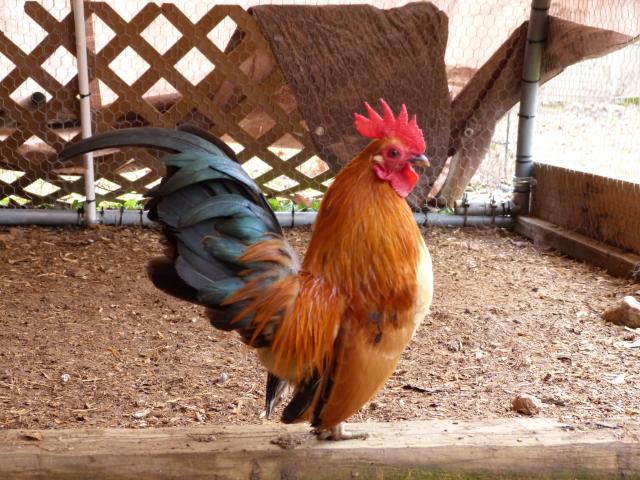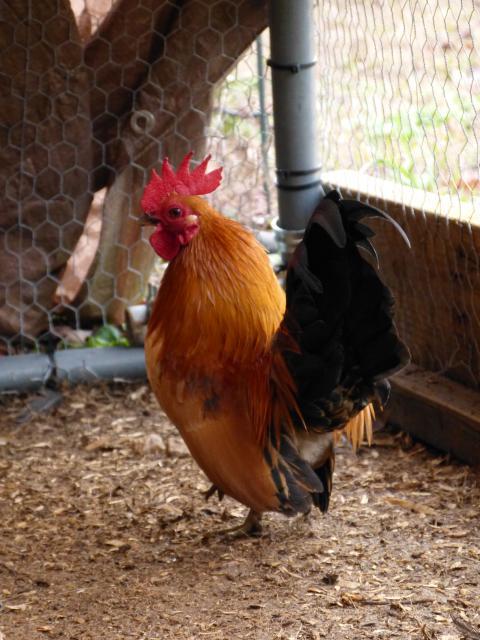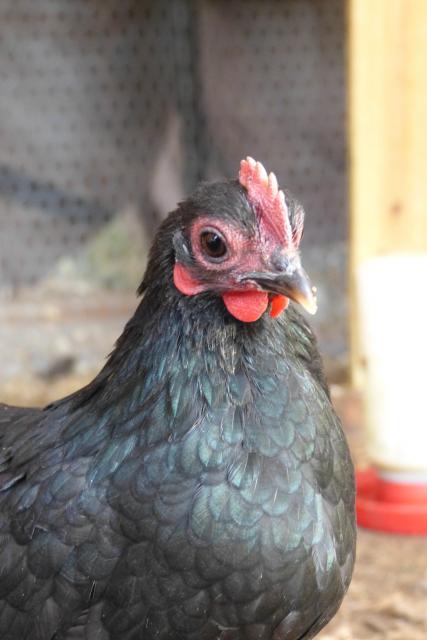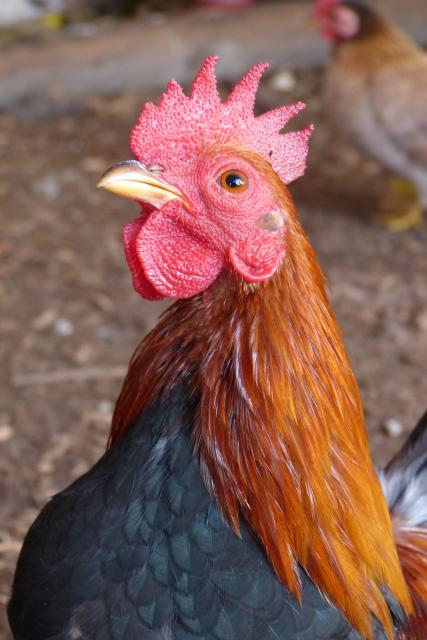here is a thread that might help
https://www.backyardchickens.com/forum/viewtopic.php?id=793
ere are some very good articles on it:
http://www.avianweb.com/Prolapse.htm
There are a number of potential causes for this condition and a number of possible solutions depending on the cause. Egg binding can be a cause, and remember egg binding is not simply the physical presence of an egg, it is the deficiency of calcium in the blood and tissues. Therefore it may occur any time before, during or immediately after egg laying. Even when adequate Calcium is available, it may still occur because the amount of calcium required for egg shell production is greater than the amount of Calcium a bird can eat in a 24hr period. This is why the breeding hen must be in perfect condition for breeding, this ensures she has adequate calcium stored in her bones prior to breeding, readily available at an instance notice.
Because egg binding is really hypocalcaemia (low blood calcium) all muscles of the body become weak and contract poorly. The uterus cannot contract enough to deliver the egg, the cloacal sphincter muscles may be too weak to hold close and the general body muscles may not be burning energy to keep the bird warm - hence they go into shock. Therefore any bird with a cloacal prolapse should be kept warm and given calcium in some form to hopefully increase cloacal muscle tone. I favour crop dosing with liquid calcium as well as in water calcium sources in these cases. Of course cuttlefish never goes astray.
Cloacal prolapse is also contributed to by uterine or cloacal infection that makes the area irritated and causes straining, resulting in expulsion of the cloaca. Therefore it is standard to give these birds antibiotics in case of infection. If a prolapse is exposed to the air for any length of time, infection is almost certain to develop, and with time the tissue dries out which causes further irritation and more straining -end result bigger prolapse.
Lubricating and gently replacing the prolapsed tissue is important, but be careful what you use. Water soluble lubricants designed for people are good. Sometimes mild antiseptics are indicated, but be careful not to cause further tissue damage.
In many cases, the prolapse will not resolve and treatment becomes Veterinary in nature with surgery the only option. A purse string suture may be placed around the vent under general anesthesia to keep things inside. But this also often fails. If the bird is a pet, the best option is desexing to remove the swollen uterus and if necessary a procedure called cloacapexy to stitch the cloaca back inside the body. These procedures are quite successful but obviously prevent the bird from further breeding. I have never performed these procedures on birds smaller than a Cockatiel, obviously the stress and length of surgery have to be considered when dealing with a finch.
If the tissue looks healthy, that is important, if it looks dried and dying, things are probably too late. Mineral oil is not a good idea, either in this situation or in egg binding. It is part of the common misconception that egg binding, or straining equals constipation. There is no physical obstruction in either case, so mineral oil will only cause diarrhea at best. At worse it can cause a GI tract upset that can make the bird even more unwell. I have always been amazed at the number of people who think oral oil will lubricate the reproductive tract. (not a personal criticism of you, but an observation of aviculturists writing bird books).
If an egg is in the lower reproductive tract or cloaca for any length of time, the uterus and cloaca can dry out and require lubrication, but it must be applied in a retrograde fashion up the cloaca. When I was referring to human water soluble lubricants, I was not meaning for hemorrhoids, but for reproduction - that is K-Y jelly or similar, not oil based lubricants wink
Hemorrhoids is a different problem totally to what the bird is suffering. In the human case there are badly swollen blood vessels that need to be constricted - hence the phenylephrine in it. In the case of the bird, there may be some small vascular swelling that could benefit from constriction, however the risk is the bird may absorb large quantities of the phenylephrine and this could have a systemic effect (whole bird).
So no, I would not normally recommend this type of ointment.
The calcium solution I use is called Calcium Sandoz. I would give a Zebra 0.1ml orally with a crop needle if it was eggbound or prolapsed. I might repeat this if I felt it was necessary, sometimes 3-4 times daily. I often also use it in water at the rate of 10ml/liter. It needs to be made fresh at least daily. It has the added benefit of being high in sugars, making it palatable and being useful for a bird in shock/stress, however it will grow bacteria in the water supply so this must be considered.
I would normally always use antibiotics in these cases, as I explained infection is sometimes the causative factor. However pet shop type antibiotics should never be used in any situation as they have little effect on pathogens (disease causing bacteria). This is the reason why they are available without prescription - they are useless. The choice of antibiotic and dose rate is obviously the decision of the Veterinarian treating the case.
For the aviculturists faced with a prolapsed cloaca, you must stop short of the antibiotics, relying only on the calcium, cloacal replacement and supportive treatment. If this does not work, then it is a Veterinary matter, or else humane euthanasia.
http://www.agric.gov.ab.ca/livestock/poultry/prolapse.html
http://www.exoticpetvet.com/breeds/birdsmashdiet4.htm






